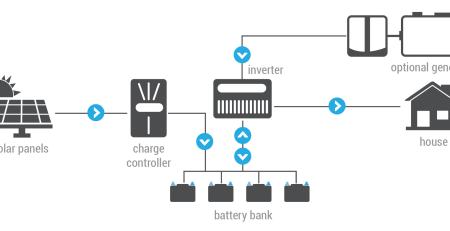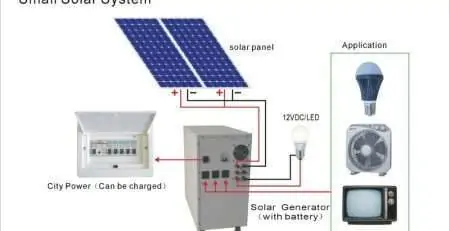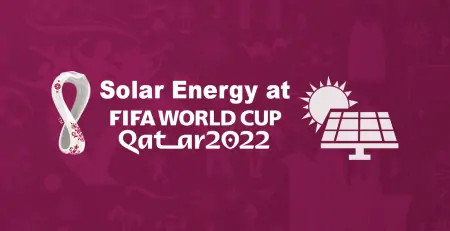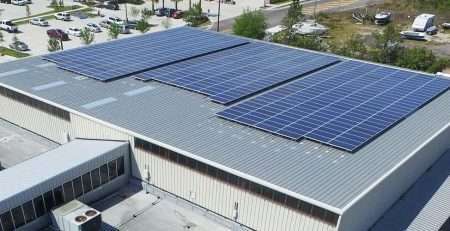How Climate Change Threatens MENA’s Solar Energy Revolution
The Middle East and North Africa (MENA) region has long been recognized for its vast potential in solar energy due to its abundance of sunlight. However, as the region strides towards harnessing this potential, climate change poses a significant threat that could dim this bright future.
MENA’s Renewable Energy Growth
According to a recent report by the Global Energy Monitor, Arab countries increased their renewable energy production capacity by 57% from mid-2022 to mid-2023, reaching a total of 19 gigawatts. The report predicts a further increase of 50% by 2024. However, the region needs to multiply its renewable energy capacity by 20 times to replace its dependence on gas. While this growth is commendable, it remains relatively modest compared to other regions, given MENA’s heavy reliance on oil and gas.
In the past year, all but two countries in MENA have expanded their plans for wind and solar energy. Notably, eight countries plan to triple their capacity from what it was 12 months ago.
Leading the Charge: UAE, Oman, and Morocco
The UAE, Oman, and Morocco are at the forefront of the region’s solar energy production:
- UAE: The UAE has achieved a total operating capacity of 5.6 gigawatts as of May 2023, with 3 gigawatts from large-scale solar projects.
- Oman: Oman has added over 1 gigawatt of renewable energy, totaling 1.28 gigawatts, with ambitious plans to add 46.4 gigawatts of solar energy.
- Saudi Arabia: The kingdom’s solar energy capacity stands at approximately 776 megawatts, with future plans for 14.97 gigawatts.
- Qatar: With the completion of the Al Kharsaah solar power plant, Qatar’s capacity jumped to 800 megawatts, with plans to add another 875 megawatts.
- Egypt: Egypt’s solar capacity has exceeded 2 gigawatts, with future plans to add 20.6 gigawatts.
- Jordan: Jordan’s capacity has surpassed 1.14 gigawatts, with plans to add another 1.16 gigawatts.
- Morocco: With an operating capacity of approximately 740 megawatts, Morocco plans to add over 29 gigawatts, positioning it as a key player in the region.
Climate Change: A Looming Threat
Despite significant advancements, the MENA region’s unique geographical characteristics mean it faces substantial challenges from climate change. Rising temperatures and changing atmospheric dynamics could lead to fluctuations in solar radiation, impacting the region’s ability to generate solar energy.
Researchers warn that hot, arid regions like MENA are particularly vulnerable to these fluctuations. Increased temperatures can lead to more cloudy days, higher humidity, and a rise in aerosols and suspended particles in the atmosphere. These factors can reduce the efficiency of solar panels and increase the need for regular cleaning due to dust storms.
Ahmed Abdel Rahim, an assistant professor of climatology at Mansoura University, highlights that optimal solar panel efficiency occurs at around 25°C. An increase of just one degree Celsius above this can reduce efficiency by 0.5%. Thus, rising temperatures can significantly impact the performance of photovoltaic plants in the region.
Addressing Solar Radiation Fluctuations
The fluctuating amount of solar radiation due to climate change can result in significant changes in energy stability. As atmospheric turbulence increases and dry soils generate more aerosols and dust, solar radiation reaching the Earth’s surface decreases, disrupting solar energy production.
A study in Nature Sustainability (June 2020) revealed that suspended matter in polluted and desert areas like MENA can reduce solar panel efficiency by more than 50%. However, removing these pollutants can more than double the panels’ efficiency.
The Role of Energy Storage
To mitigate the impact of climate change on solar energy, energy storage has been suggested as a solution. However, Panagiotis Kosmopoulos, a renewable energy expert at the National Observatory in Athens, argues that while current storage technologies are useful, they may not be sufficient in the long term. He anticipates significant changes in electricity transmission technologies, which could render current storage solutions outdated.
The Path Forward
Kosmopoulos projects a 5-10% reduction in photovoltaic energy production in MENA over the next 40 years due to climate change. He stresses the need for a transition to a low-carbon economy and a lifestyle based on renewable energy. The potential levels of solar energy in MENA are a natural gift that must be harnessed to provide affordable, modern energy for all.
The MENA region stands at a critical juncture. While it has made impressive strides in solar energy production, the looming threat of climate change requires innovative solutions and continued commitment to renewable energy to ensure a sustainable, brighter future.











